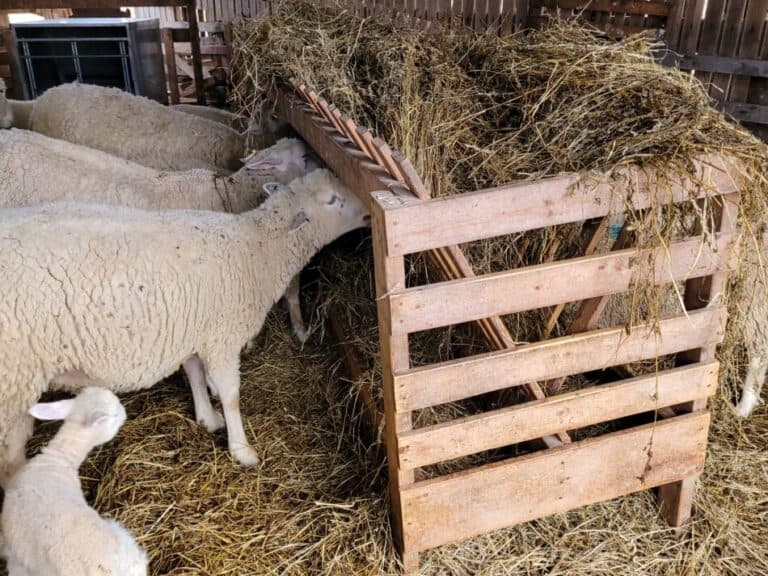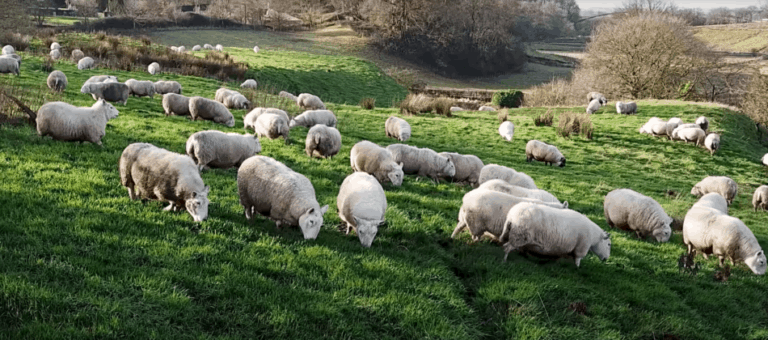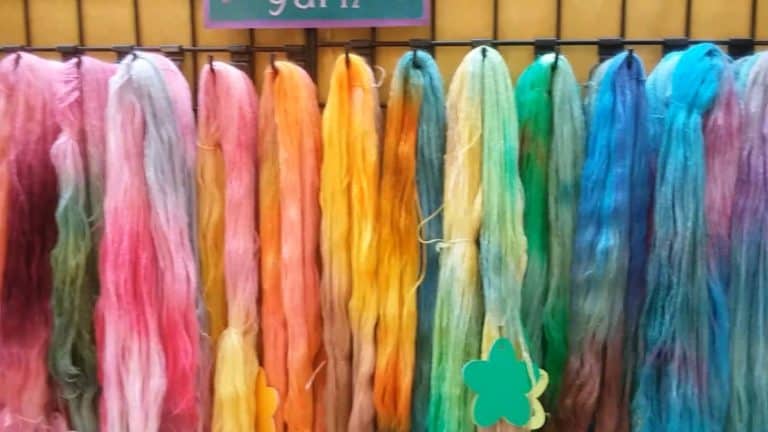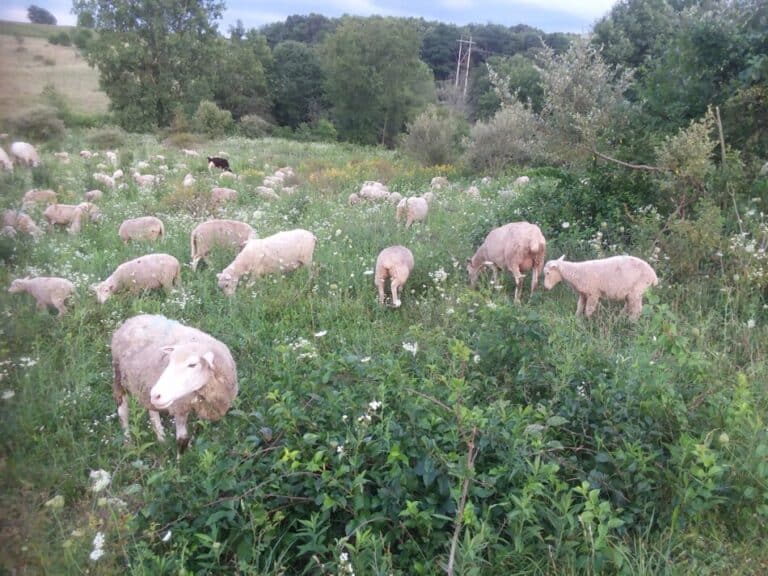Why Don’t Sheep Naturally Shed?
If you have spent any time around animals, at all, you know that many animals, both wild and domestic, shed their hair coats. Think of all the hair that is around your house from your pets!
If most other animals can shed their coats, why can’t sheep naturally shed their wool?
While there are a few breeds of sheep that naturally shed their wool, called hair sheep, most domestic sheep do not shed. This is due to generations of selective breeding designed to improve wool quality and quantity, which includes selecting against wool shedding, in a time when wool was a valuable commodity.
Sheep are bred for characteristics that make them valuable to the farmer and in generations past, one of the main sources of income from sheep was the wool.

Sheep are bred to keep their wool
Most domestic sheep breeds have been bred for generations to keep their wool coat intact so the shepherd would not lose any of the valuable wool.
In the last 90 years or so, the value of wool has declined significantly, due to other fibers being created that are now used instead of wool.
This means that the wool that was the more valuable aspect of the sheep, when compared to the meat value, but now most wool has now gone down to a low to no value commodity.
But the genetics of the sheep being raised did not change as fast as the wool market has dropped.
This means that even though there is little to no market for most wool in the U.S. most of the sheep raised in the country are still wool producing sheep.
There has been a significant shift to hair sheep, especially in the last 10 years or so, but the majority of the sheep in the nation still are wool producers.
If you want to learn more about using sheep wool, check out my other site, Wool Maven, where I go over learning to spin with wool and what breed specific wools to start with.
If you have never looked into the craft uses of wool, you’ll be surprised at how popular it is and all of the different breed specific wools that are available to use.
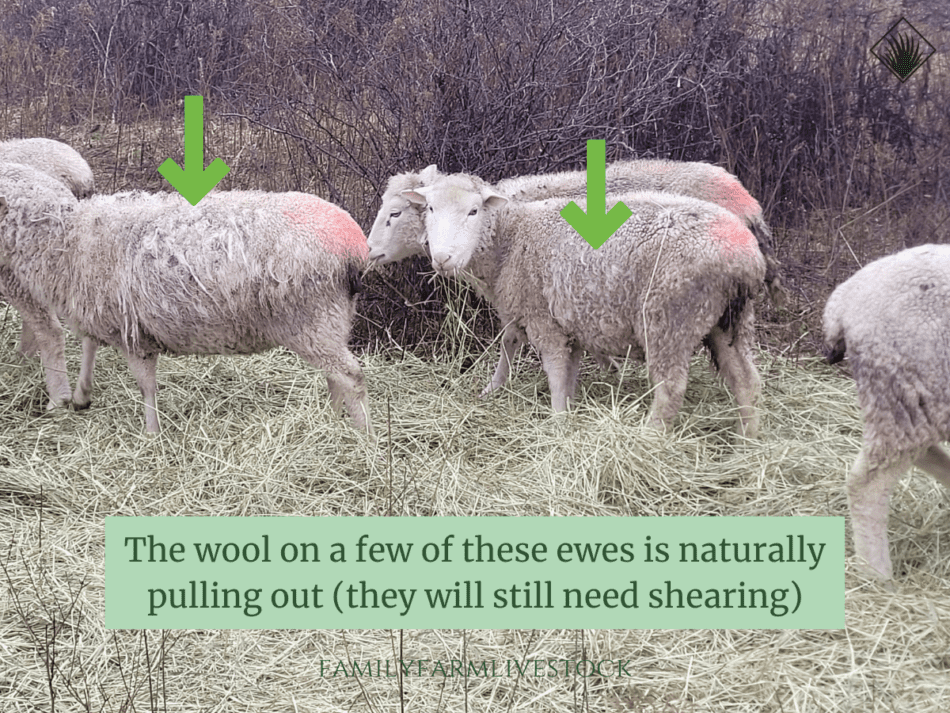
Some sheep start to shed
Some sheep will start to shed their wool, even though they are not a hair sheep.
We see this occasionally with some of our ewes. I don’t know if they rub around and get the wool stuck on the briars or branches and it just pulls out from there or the wool is loosening up from the skin.
Either way, it looks like some of the ewes are trailing around with spiderwebs of wool hanging off of their backs.
Some wool sheep will shed
There are wool sheep that will shed naturally. It is not common for a wool sheep to naturally shed, actually it is fairly uncommon, but it is possible.
When tufts of wool start to stick out of the main coat, the shepherd brings in the sheep and gathers up the wool by lightly pulling off the tufts. Any tufts that are not easily coming off are clipped off with shears.
Hand gathering wool directly from the back of sheep is called rooing. Rooing does not hurt the sheep, it is more like combing long hair in that you can feel the hair being under tension, but it is not painful.
If you would like to learn more about rooing in Shetland sheep, check out OK Acres Shetlands.
This is a link to a blog article showing a ewe that is being rooed while on a shearing stand. The sheep is tied to a raised stand so she does not fall off then the loose wool is gathered up into bags.
The shepherdess keeps certain parts of the fleece together sectioning off the premium tufts from the dirty or debris filled fleece. This makes it easier to sort the fleece for woolcrafting, like spinning or felting.
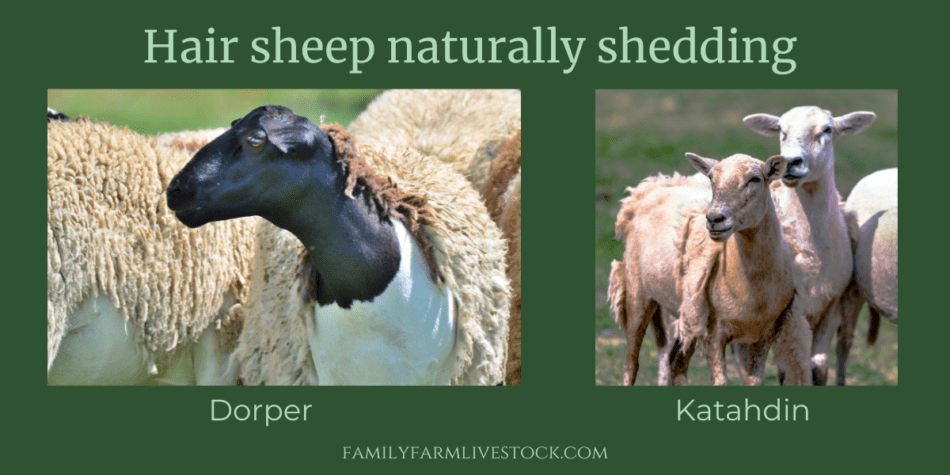
Hair sheep naturally shed each year
Hair sheep, unlike wool sheep, will naturally shed their coats each year, much like your dog will shed out each year.
Interestingly enough, hair sheep grow a shorter coat of wool, not just hair, for the winter. The winter wool adds protection from the weather, giving the hair sheep a double coat for part of the year.
In the spring, the winter coat will shed out naturally.
When the winter coat is being shed, the hair sheep will get clumps or mats of nearly shed wool mostly seen on their backs that will eventually drop off leaving the new summer coat.
Some breeds of hair sheep do not completely shed, for instance some flocks of Dorpers still need to be shorn to remove the winter coat, but for the most part, hair sheep will shed on their own.
For a complete list of hair sheep breeds, read Sheep 101: Hair Sheep. This is a great site with tons of information on all aspects of sheep and raising them. Click around and see what you find.
Hair sheep bred to wool sheep tend to have wool
Crossbred sheep (dad and mom are from different breeds) tend to have wool, even if one of the parents is a hair sheep.
If you were to breed your flock of hair sheep to a wool sheep ram, you will get lambs that have wool and therefore need to be shorn if you keep them for the flock.
If you were to go the other way and have a flock of wool sheep that you are trying to transition over to hair sheep, the first few generations of 50% hair sheep and 50% wool sheep will have wool.
If you keep these 50/50 lambs and use them for your breeding flock, their lambs, are the second generation of your breeding plan would be 75% hair sheep and 25% wool sheep and will still have wool.
It takes until the third cross, which would be 87.5% hair sheep and 12.5% wool sheep to get to a lamb that would probably not need to be shorn.
This means that any flock can be changed genetically to shed, over the course of a few generations if the shepherd wants to do so.
Other sheep related articles you may be interested in:
Easy Sheep Breeds For Beginners
Sheep 101: Wool Production goes over more aspects of raising sheep for wool, including breeds and what is done with the wool.
